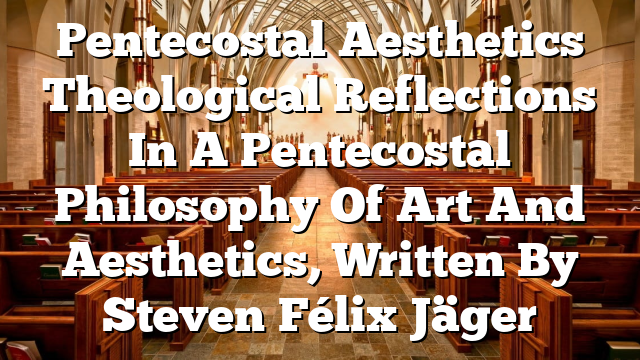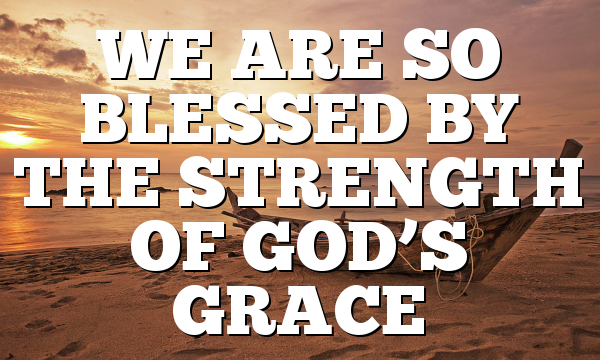Click to join the conversation with over 500,000 Pentecostal believers and scholars
Click to get our FREE MOBILE APP and stay connected
| PentecostalTheology.com



book reviews
221
Steven Félix-Jäger
Pentecostal Aesthetics: Theological Reflections in a Pentecostal Philosophy of Art and
Aesthetics(Leiden, The Netherlands: Brill, 2015). 177pp. $71.00 paper.
Félix-Jager has blazed a trail for Pentecostals with this unprecedented study. Indeed, creative as they historically are, why haven’t Pentecostals engaged the arts and aesthetics more intentionally? Originally his dissertation at Glyndŵr University (2013), in this book Félix-Jäger throws “all-in” with both Postmod- ernism and Pentecostal pneumatology.
On the former, Félix-Jäger provides a brief historical accounting of what Postmodernism is: a condition more than a carefully derived position (citing Vanhoozer). Yet it is a condition that makes room not only for Pentecostals to engage art and aesthetics from their own cultural location(s), but also one that should make room for a distinctly Pentecostal aesthetic. Because Postmod- ernism is about axiology and not about either metaphysics or epistemology, Félix-Jäger believes there is now intellectual and cultural space for a Pente- costal Christian worldview in the arena of contemporary art, “The relativistic assumptions of postmodernism welcome the Pentecostal voice to join the con- versation,” (66). He realizes that the Postmodern world is not interested in ultimate truth claims and so he cautions that “Pentecostals objective assertions must be graciously dogmatic” (122). Indeed, he carefully qualifies that there is room for the belief that beauty is objectively real, but only as that belief rests in faith. There is no reason for Christians or Christian intellectuals to be unneces- sarily off-putting to their secular interlocutors.
Concerning Pneumatology, Félix-Jäger avers that Pentecostals approach reality with both “expectancy and encounter” (92, citing Warrington). It fol- lows in Félix-Jäger’s thinking that Pentecostals should be open to encountering, and then to discerning, the inspiration of God’s Spirit in art produced by non- Christians. The Spirit collaborates with the humanity of diverse peoples (he follows Guthrie and McElroy hereon) in a way that makes them into the “full- ness of who we were created to be,” (88). Specifically for a distinctive approach to art and aesthetics, Félix-Jäger proposes that Pentecostals firstly view art as a charism, but only so long as “it is in service to God, and not to religion. If art serves religion, like in the Exodus of the golden calf, it can become idola- try,” (139). Secondly, following Suurmond he encourages Pentecostals to view artisanship as play. Play, because it “is irrational and supralogical” (158), has no intrinsic purpose and so a doorway is opened up for grace. Out of grace, and for no functional purpose, God created the universe to shine forth his glory. Similarly, Pentecostals can encourage and engage the arts in a playful manner, not so much to teach as to share. On this point he elevates Makoto
© koninklijke brill nv, leiden, 2016 | doi: 10.1163/15700747-03801010
1
222
book reviews
Fujimura, an artist (recently hired to head Fuller Seminary’s Brehm Center for the Arts) whose abstract work is produced not to teach but to be contemplated; Fujimura paints not to suggest answers but rather to seek guidance. Similarly Pentecostals, Félix-Jäger implies, would do well to use art to engage culture and stimulate thoughtful conversation rather than to proselytize or advertise their faith.
There is so much that Pentecostals will find informative and commendable in this book. Félix-Jäger offers the reader a succinct historic overview of painted art. He repeatedly works his themes through Pentecostalism’s pneumatologi- cal lenses: eschatology, charisma, relationship, anthropology, and mission are each employed to carry his arguments. He takes account of much recent Pen- tecostal scholarship. Moreover, he manifests a theologically ecumenical aware- ness: the Roman Catholic Patrick Sherry, the Lutheran Jürgen Moltmann, the Reformed Karl Barth, the enigmatic Clark Pinnock, and the Presbyterian Kevin Vanhoozer, among others, are all engaged in this groundbreaking study. There are thoughtful admonitions about how to discern the S/spiritual quality of non- Christian and even other-religion produced art. Very helpful, Félix-Jäger helps the reader understand the philosophical turn beneath why recent western art has turned so consistently toward the subjective and the avant-garde. There are even twelve photographs that illuminate the particularly nuanced details made throughout the book.
Yet for all my admiration, I have a question and a looming trouble-spot. First the question. If a criterion for discernment of the Spirit’s inspirational effect in artwork is that it serve God, not religion, how is it that Félix-Jäger wants Christians in general, and Pentecostals in specific, to seriously and even theologically consider the artwork produced by artists in other religions? By his own parameters, would not that rule out all non-Christian religious art? This is especially perplexing given that he carefully and repeatedly argues that artists must be examined as members of their own sub-cultures. Since those artists see themselves as resolutely serving their own god(s) and/or religious communities, communities that have no correlation with the God of the Judeo- Christian tradition,it seems Félix-Jägerhas ratherpainted himself intoa corner: their art is idolatrous. Seriously, I doubt he would agree, but that is the edge of the formative gang-plank toward which he walks us.
Then there is a confusing trouble-spot. The central aim of Félix-Jäger’s book is to ground his philosophical aesthetics. Thus, he rightly seeks an ontologi- cal foundation (Ch. 2). His yearn thereon is appropriate. Aesthetics truly is a topic today that frequently slithers with no constraints. For their part, twen- tieth and twenty-first century Pentecostal theologians have sought anchors rooted in God’s revelation for their theology: biblical narratives, the person and
PNEUMA 38 (2016) 215–243
2
book reviews
223
work of the Spirit, the apostolic diversity of the Church, New Testament writ- ings on spiritual gifts, the Trinity, or even a pneumato-eschatology. But Félix- Jäger’s chosen philosophic foundation, “ontological contextualism” (74, follow- ing Dickie), is avowedly Postmodern: each community, Pentecostals included, should determine what is beautiful, what is art, and how both beauty and art should be understood. He clarifies, “I am arguing that the culture that possesses the work of art is the ‘holder’ or authoritative judge of what is good in art,” (71). One wants to ask Félix-Jäger and Dickie, “wait, is it ontology or is contextual- ism?” But that it is both is at best mystifying. In short, Félix-Jäger has chosen axiology not ontology. Axiology may be a prevalent and current philosophi- cal mooring, but it could easily be uprooted by the forces of history and/or keen philosophic minds. Ontology goes to essence, nature, inherent properties, and/or transcendence; categories determinedly rejected by Postmodernism. Again, his choice of ontological ground is vexing given that Postmodernism itself has abandoned both metaphysics and ontology. Finally hereon I’ll add that this ontological shifting sand may be more a matter of his having cho- sen dialogue chiefly with philosophers. By choosing a philosophical rather than theological ground, Félix-Jäger may simply be being missional or pragmatic and not dogmatic.
Those critiques aside, I learned repeatedly reading this engaging book. Many traditional philosophic-aesthetic categories are brought before Pentecostal commitments and orientations in creative ways. Those considering how to bridge Pentecostalism and aesthetics are highly encouraged to read this fine exploration.
Edmund J. Rybarczyk
Professor of Theology, Vanguard University, Costa Mesa, California
erybarczyk@vanguard.edu
PNEUMA 38 (2016) 215–243
3


